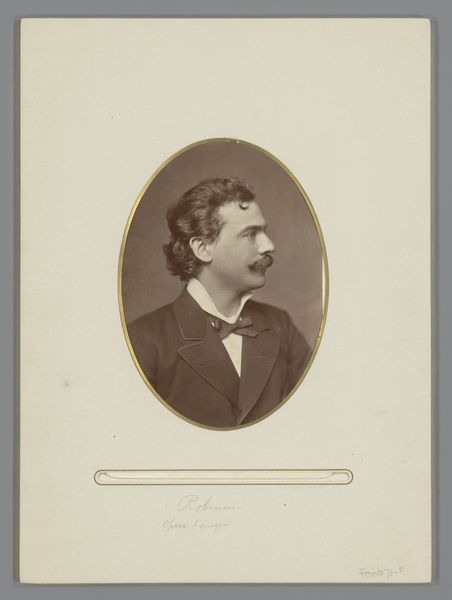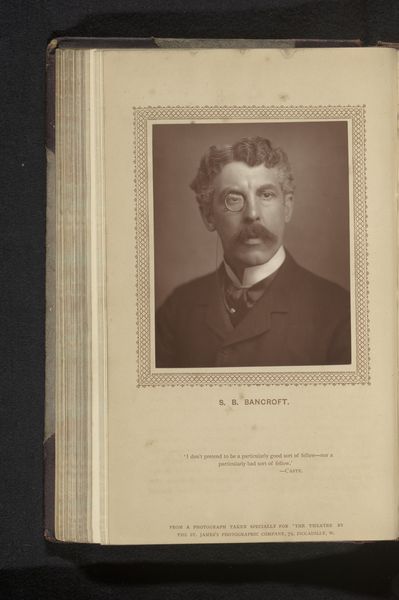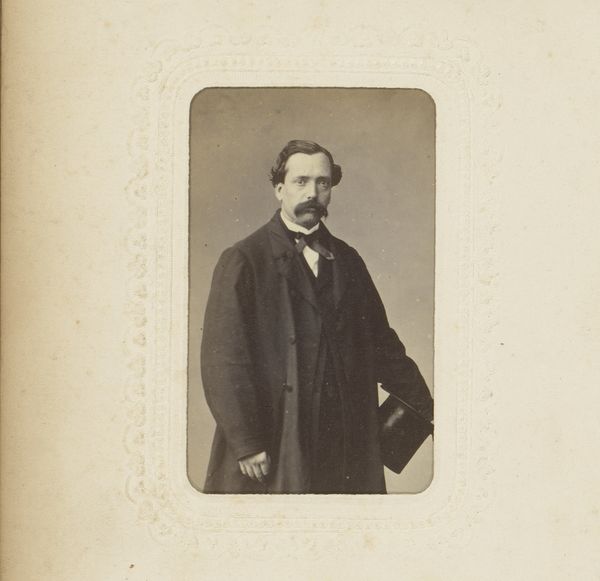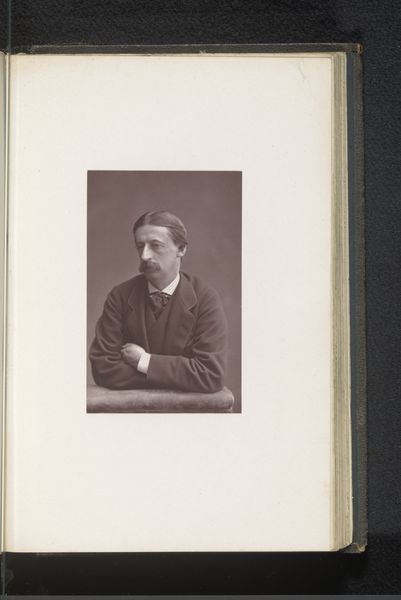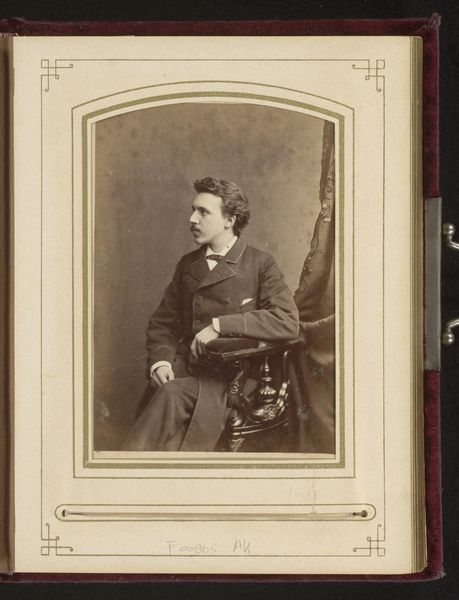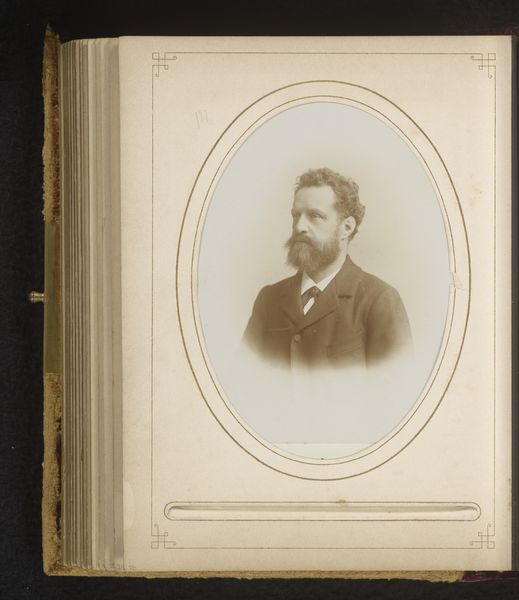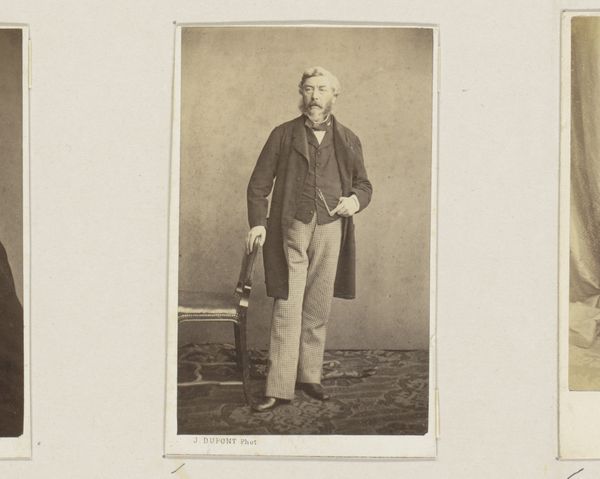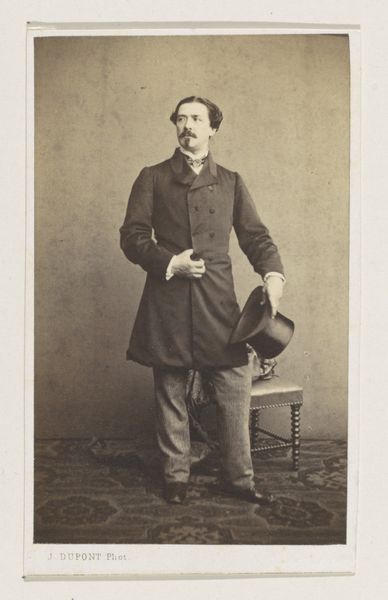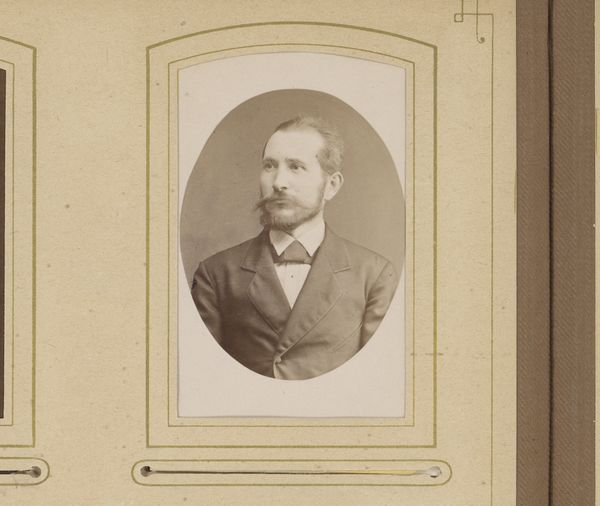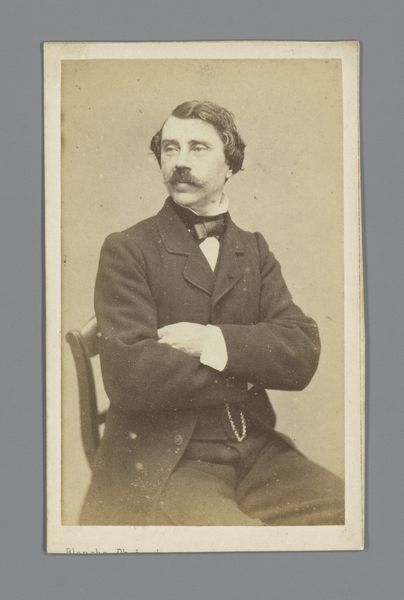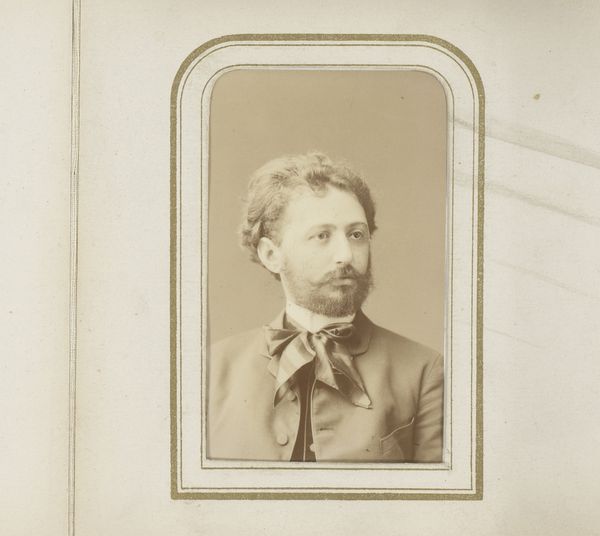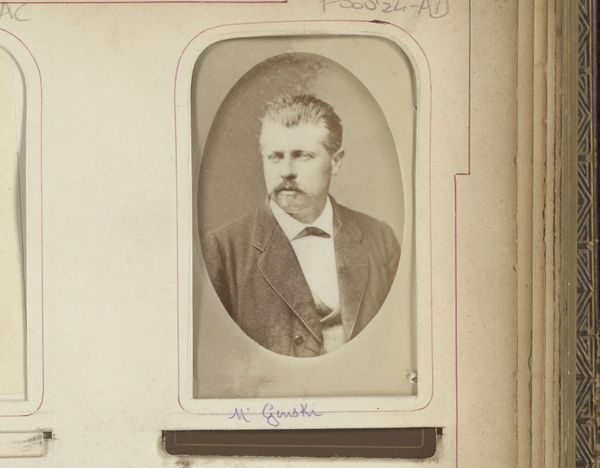
paper, photography, gelatin-silver-print
#
portrait
#
impressionism
#
paper
#
photography
#
gelatin-silver-print
#
monochrome
Dimensions: height 227 mm, width 185 mm
Copyright: Rijks Museum: Open Domain
Étienne Carjat created this photograph of Henri Houssaye using a collodion glass negative, a process that was revolutionary for its time. Photography in the 19th century was as much about chemistry and mechanics as it was about artistry. The collodion process involved coating a glass plate with chemicals, exposing it in the camera while still wet, and then developing it immediately. The resulting glass negative could then be used to make multiple prints on paper. The tonal range and sharp detail of this photograph speak to Carjat's mastery of the process. However, it is important to remember that photography was also a business. Studios like Carjat's mass-produced images for a growing consumer culture, which changed the way people saw themselves and others. Considering photography as a skilled craft helps us appreciate not only the aesthetic result, but also the social context in which it was made.
Comments
No comments
Be the first to comment and join the conversation on the ultimate creative platform.
